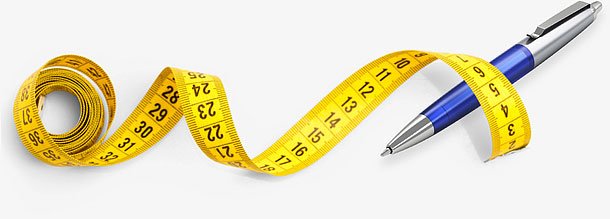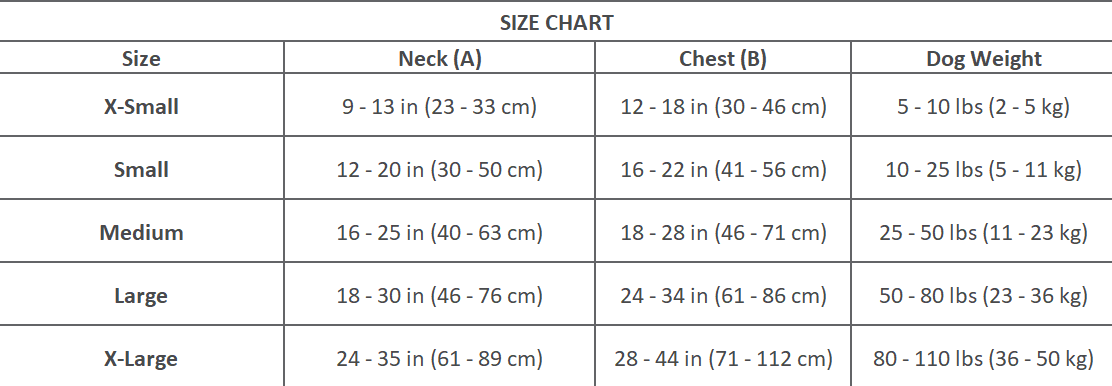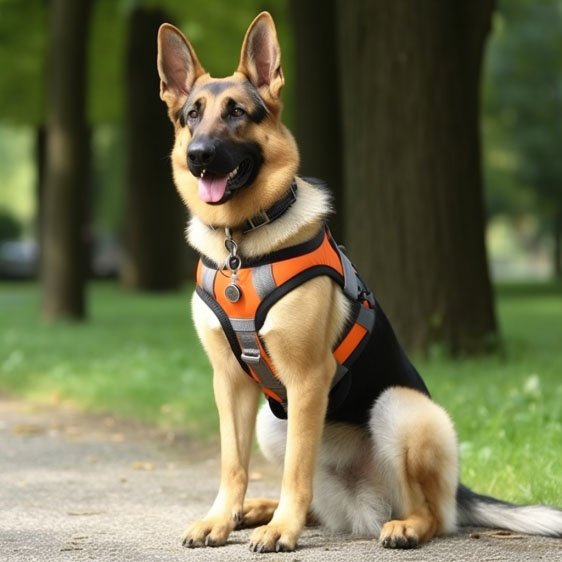Choosing the right harness for your dog ensures comfort and safety during walks. A well-fitted harness provides better control and reduces the risk of injury. Ill-fitting harnesses can lead to discomfort, chafing, or even allow your dog to escape. This blog will walk you through accurately measuring your dog for a harness, ensuring a perfect fit every time.
A properly fitted harness offers numerous benefits for both you and your dog. It provides better control, especially for dogs that tend to pull on the leash, and helps distribute pressure evenly across the body, reducing the risk of injury to the neck or spine. Moreover, a harness that fits well prevents chafing and discomfort, which can occur with too tight or loose harnesses. By measuring your dog accurately, you ensure their comfort and safety, making walks more enjoyable for both of you.

Before you begin measuring your dog, gather the necessary tools to ensure accuracy:
– Flexible Measuring Tape: This is essential for precise measurements of your dog’s body.
– Pen and Paper: Use these to record the measurements as you take them.
– Optional Tools: Consider using apps or online tools that can help you keep track of your dog’s measurements over time.
Step 1: Measure the Neck
Start by measuring your dog’s neck. Place the measuring tape around the base of the neck, where the collar would typically sit. Ensure the tape is snug but not too tight, allowing for a comfortable fit. This measurement is crucial for harnesses that have a neck strap.
Step 2: Measure the Chest
Next, measure the widest part of your dog’s chest, just behind the front legs. This is the most critical measurement for selecting a harness, ensuring it will fit comfortably around your dog’s body. Again, keep the tape snug but not tight, and double-check the measurement for accuracy.
Step 3: Measure the Back Length (if necessary)
You may also need to measure your dog’s back length for certain harness styles. Measure from the base of the neck to the base of the tail. This measurement helps select harnesses that cover more of the dog’s back, providing additional support.


– Keep the Tape Snug: Ensure the measuring tape is snug against your dog’s body without being too tight.
– Measure Twice: Double-check each measurement to ensure accuracy.
– Record Immediately: Write down the measurements as soon as you take them to avoid forgetting or mixing them up.
Following these steps and tips, you can ensure you have the right measurements to choose a harness that fits your dog perfectly.
Once you have your dog’s measurements, the next step is selecting the correct harness size. Each manufacturer may have slightly different sizing, so it’s important to consult the size chart provided by the harness brand you are considering. Compare your dog’s neck and chest measurements to the size chart to find the best fit. If your dog falls between sizes, opt for the larger size to ensure comfort. Remember, a harness that is too tight can cause discomfort, while one that is too loose may allow your dog to slip out

After purchasing the harness, it’s time to fit it on your dog. Begin by loosening all the straps and gently placing the harness over your dog’s head or stepping them into it, depending on the style. Secure the buckles and adjust the straps so the harness fits snugly but not too tightly. You should be able to fit two fingers between the harness and your dog’s body. Check that the harness sits comfortably without restricting movement or causing chafing. Walk your dog around the house to ensure they are comfortable, and the harness stays in place
In summary, measuring your dog accurately is the key to finding a harness that provides comfort and safety. Following the steps outlined in this guide can ensure a proper fit that enhances your dog’s walking experience. Regularly check the fit of the harness as your dog grows or changes weight, and adjust as necessary. A well-fitted harness keeps your dog safe and makes walks more enjoyable for both of you. For a selection of high-quality harnesses designed with your dog’s comfort in mind, explore our range today and give your furry friend the best walking experience possible!